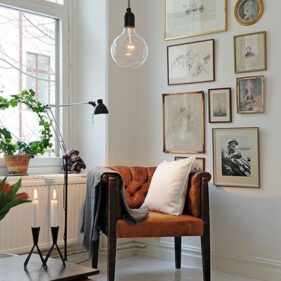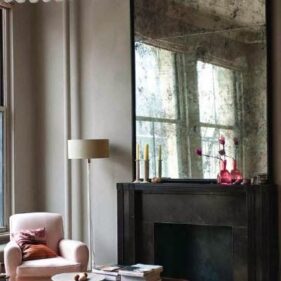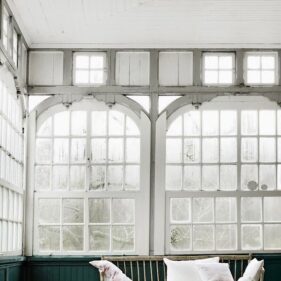Bring the Minimalist Movement into Your Home: How to Make Less More
The Minimalist Movement originally sprang forth in the 1960s in New York City as a rebellion against the previously dominated, artist-centric style of Expressionism, states The Art Story. Minimalists, such as famed artist Frank Stella, aimed to uncomplicate artistic expression by creating works of anonymity and simplicity, works that promoted a seamlessness of art and sculpture. Minimalism has again sparked our interest, this time in the world of interior design.
A modern minimalist strives to let go of all that is inessential and focus on what is most important. In design, that means developing a simple, aesthetic appeal while streamlining and decluttering a room. But that doesn’t mean that you have to skimp on character and panache. You can still promote pragmatic design without sacrificing style. As Leonardo da Vinci said, “Simplicity is the ultimate sophistication.”
Here are three simple design directives to consider when minimizing your home decor.
Strip It Down
The first step to modern minimalism is to, of course, minimize. The biggest offender of minimalism in a living room is excessive furniture. A simple, streamlined design allows for clean lines and lots of space. Strip down the room to the bare bones. Store nothing on the floors or walls. Eliminate any shelving or storage pieces in the room. Minimalistic streamlining calls for a clean spacious feel to a room and draws attention to specific areas, like an art deco museum. Only include furniture necessary to remain comfortable. In a living room, for example, only display a sofa, coffee table and accent piece.
Choose Furniture Wisely
Most minimalist sofas are simple in design but not in style. Choose subdued colors in solid prints and designs that are both functional and comfortable. Avoid patterns. Depending on your sofa selection color and style, seek out a coffee table with divergent design. Popular minimalist coffee table motifs include those with straight lines or grid designs, which reflect the inherent traits of minimalist art. In particular, glass tables can add a sleek and sophisticated appeal to the living room and contrast nicely with a soft-toned sofa.
Use Accents Stylistically
With so little content in your room, window treatments can play a vital role in creating personality and style within a minimalist environment. Use treatments as accents, and choose those made from materials that juxtapose your sofa fabric to add texture and depth to the living space. Either choose subtle drapery with a simple geometric or grid pattern, or choose a bold, solid color to add a little flare.
You may add one additional accent piece to the room without ruining the minimalist effect. Choose carefully. Popular accent pieces include a flower vase of bright, striking color, or a framed, horizontally-long piece of artwork. If you have decided on muted colors for both the sofa and window treatments, add flare with a unique geometric wall design or a rug of solid, striking color.
Modern minimalism requires doing away with the inessential clutter and focusing on the necessities of a room. The philosophy of minimalism is reflected in design as well as in life. Sometimes it is best to shed that which is unnecessary and focus solely on the essentials.





